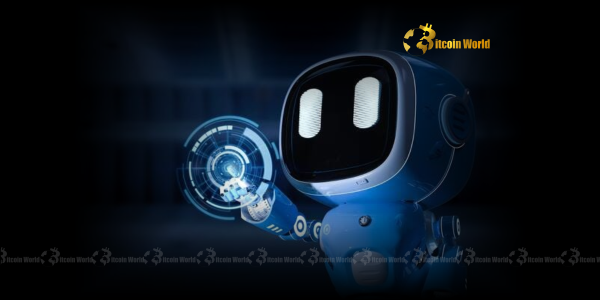
In the rapidly evolving landscape where innovation often intersects with unexpected domains, the latest move by Diligent Robotics offers a compelling narrative for those tracking advancements in autonomous technology and its real-world applications. While the crypto world often focuses on decentralized finance and blockchain, the underlying technological breakthroughs in AI and robotics are equally transformative, hinting at a future where smart machines seamlessly integrate into our daily lives. Diligent Robotics, a pioneer in healthcare automation, is making waves by strategically bolstering its leadership team, signaling an ambitious push to scale its groundbreaking fleet of Moxi humanoid robots.
A Strategic Infusion of Autonomous Technology Expertise
Diligent Robotics, an Austin, Texas-based innovator, has announced two pivotal appointments to its leadership team: Rashed Haq as Chief Technology Officer and Todd Brugger as Chief Operating Officer. Both individuals bring a wealth of experience from Cruise, the GM self-driving subsidiary that recently ceased operations. This strategic hiring move underscores Diligent’s commitment to leveraging top-tier expertise from the broader autonomous sector to propel its mission in healthcare. Haq, formerly VP and Head of AI and Robotics at Cruise, and Brugger, Cruise’s former COO, are now poised to apply their deep knowledge of scaling complex autonomous technology systems to the burgeoning field of healthcare robotics.
Why Now? Scaling the Future of AI in Healthcare
Andrea Thomaz, co-founder and CEO of Diligent Robotics, emphasized that the timing for these leadership hires is crucial. With approximately 100 Moxi humanoid robots already deployed in healthcare facilities, assisting with non-patient-facing tasks, Diligent is transitioning from a phase of meticulous development to aggressive scaling. Thomaz noted, “We’ve purposely grown a little bit more slowly, I would say, over the last, two or three years, really honing some of the operational efficiencies and getting ready to be in a position to scale more dramatically.” This measured approach has allowed the company to refine its Moxi robots, ensuring they are robust and efficient before expanding their footprint across more healthcare networks. The integration of Haq’s AI prowess and Brugger’s operational scaling expertise is expected to significantly accelerate this expansion, bringing the benefits of AI in healthcare to a wider audience.
From Autonomous Vehicles to Humanoid Robots: A Seamless Transition?
For Haq and Brugger, the transition from autonomous vehicles to healthcare robotics felt like a natural progression. Haq highlighted the fundamental similarities, stating that autonomous vehicles are, at their core, mobile robots. This perspective underlines the transferability of their extensive experience in developing and deploying complex robotic systems. Brugger echoed this sentiment, noting that many operational challenges and priorities at Diligent mirror those at Cruise. Both executives were particularly drawn to Diligent’s established traction and the ‘stickiness’ of its product. Haq observed, “Many companies have early traction in terms of revenue and I call it ‘vibe revenue,’ because people try it out, and then they cancel their service afterwards, so then that revenue dies out. But with Diligent, if you look at all the metrics, the robots are actually in day-to-day use, and have become integral parts of the companies that are using them. So that makes it a very sticky product as well.”
Building the Pyramid: Safety, Reliability, and Product-Market Fit in Healthcare Technology
Brugger articulated a clear ‘pyramid of priorities’ that guides their approach, which he believes is highly applicable to healthcare technology. This framework starts with safety as a non-negotiable foundation, followed by reliability, and then continuous improvement in product-market fit, often achieved by expanding the robots’ capabilities. This systematic approach to deployment and scaling, honed in the demanding autonomous vehicle sector, promises to bring rigorous standards to the deployment of Moxi robots. Diligent’s Moxi robots are designed to handle tasks such as delivering supplies, collecting lab samples, and restocking shelves, freeing up human staff to focus on direct patient care. This not only enhances efficiency but also addresses critical staffing shortages in healthcare, showcasing the profound impact of advanced robotics.
The Impact of Humanoid Robots on Healthcare Operations
Founded in 2017 by Andrea Thomaz and Vivian Chu, Diligent Robotics has already made significant strides, deploying its Moxi humanoid robots in over 25 healthcare networks. The company has successfully raised over $90 million in venture funding from prominent firms like Tiger Global, True Ventures, and Canaan Partners, underscoring investor confidence in its vision. The strategic infusion of leadership from Cruise is expected to significantly accelerate the adoption and capabilities of Moxi. By streamlining non-patient-facing tasks, Moxi robots enable healthcare professionals to dedicate more time to patient interaction and critical duties, ultimately improving patient outcomes and staff satisfaction. This is a testament to the transformative power of robotics in revolutionizing hospital and pharmacy operations.
A Glimpse into the Future of Healthcare Automation
Diligent Robotics’ latest leadership appointments mark a significant milestone in its journey to revolutionize healthcare through advanced robotics. By bringing in seasoned experts from the cutting-edge world of autonomous vehicles, the company is poised for an unprecedented phase of growth and innovation. The synergy between deep AI expertise, operational scaling experience, and a proven product like Moxi promises to accelerate the integration of intelligent automation into hospitals and pharmacies worldwide. As healthcare systems grapple with increasing demands and resource constraints, the strategic deployment of humanoid robots offers a powerful solution, heralding a future where technology empowers human caregivers and enhances the quality of care.
To learn more about the latest AI in healthcare trends, explore our article on key developments shaping AI features, institutional adoption.





